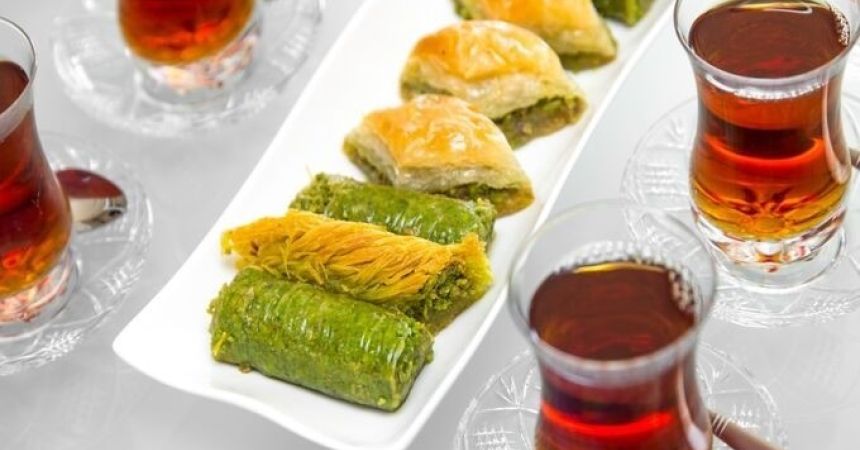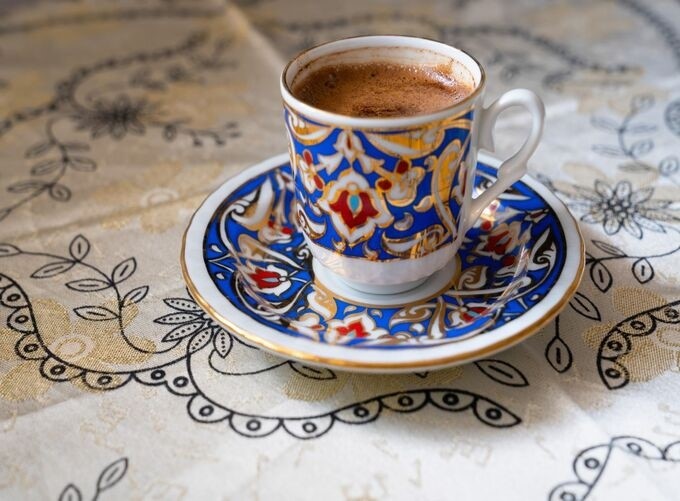
Turkish Baklava | History, Varieties & Travel Guide
Explore Turkey and Baklava, a quintessential treat that transcends borders and cultures, is a delectable pastry that captures the essence of indulgence. With its layers of flaky phyllo dough, rich nuts, and honey syrup, baklava offers a unique blend of textures and flavors that have enchanted taste buds for centuries. This comprehensive guide takes you on a journey through the world of baklava, exploring its history, various types, regional variations, and the best places to savor this sweet delight. Whether you're a connoisseur or a curious foodie, prepare to indulge your sweet tooth with every kind of baklava you can imagine!
The History and Origins of Baklava
A Sweet Legacy Across Cultures
Baklava's origins are a topic of much debate, with claims from several regions including the Middle East, the Mediterranean, and the Balkans. Its history, however, is intertwined with the rich tapestry of the Ottoman Empire, which played a significant role in popularizing this pastry across different cultures.
- Middle Eastern Roots: The earliest forms of baklava can be traced back to the ancient civilizations of Mesopotamia and Egypt. The use of honey and nuts in sweets was prevalent, and these traditions influenced the evolution of baklava.
- Ottoman Influence: The Ottomans are credited with refining and popularizing baklava as we know it today. The pastry was traditionally prepared in the Topkapi Palace kitchens and became a symbol of luxury and hospitality.
How Baklava Made Its Way to the World
Baklava spread through the Ottoman Empire and beyond, reaching various regions and cultures. Each area adapted the pastry to local tastes and ingredients, resulting in a diverse array of baklava variations.
- The Middle East: Countries such as Turkey, Lebanon, and Syria have their unique takes on baklava, each with its distinct flavor profiles and preparation methods.
Types of Baklava: A Sweet Symphony of Flavors
Traditional Baklava in Turkey
- Classic Turkish Baklava: This is the most well-known version of baklava, made with layers of thin phyllo dough, chopped walnuts or pistachios, and a sweet syrup of honey and sugar. It's often cut into diamond or square shapes.
Regional Variations
- Lebanese Baklava: Lebanese baklava might include a variety of nuts such as cashews and pistachios. It's often topped with a layer of crushed pistachios for added crunch and flavor.
- Syrian Baklava: Syrian baklava is known for its rich flavor and use of ghee (clarified butter). It may also include a touch of rose water or orange blossom water in the syrup.
- Turkish Pistachio Baklava: In Turkey, pistachios are a popular choice for baklava, and the pastry is often prepared with a light green hue and a slightly different syrup composition.
Specialty Baklava
- Chocolate Baklava: A modern twist on the classic, chocolate baklava combines layers of phyllo dough and nuts with a rich chocolate filling, often topped with a chocolate glaze.
- Baklava Rolls: Instead of the traditional cut pieces, baklava rolls are made by rolling the phyllo dough into cylinders before baking. This variation allows for a more streamlined presentation and a different texture.
- Baklava with Different Nuts: Some variations use a mix of nuts, including hazelnuts, pecans, and macadamia nuts. Each nut brings a unique flavor and texture to the pastry.
Making Baklava: A Step-by-Step Guide
Ingredients and Tools
To make baklava at home, you'll need the following ingredients and tools:
- Ingredients:
- Phyllo dough (store-bought or homemade)
- Nuts (walnuts, pistachios, almonds, etc.)
- Butter (for brushing the phyllo)
- Sugar
- Water
- Honey
- Lemon juice
- Spices (cinnamon, clove, etc.)
- Tools:
- Baking pan
- Pastry brush
- Food processor (for chopping nuts)
- Sharp knife

Preparing the Nut Filling
- Chop the Nuts: Use a food processor to finely chop your choice of nuts. You can use a single type of nut or a combination.
- Mix with Spices: Add sugar and spices to the chopped nuts to enhance the flavor.
Assembling the Baklava
- Preheat Oven: Preheat your oven to 350°F (175°C).
- Prepare the Phyllo Dough: If using store-bought phyllo, thaw it according to the package instructions. Brush each layer with melted butter before stacking.
- Layer the Dough: Place a layer of phyllo dough in the baking pan and brush with butter. Repeat the process, layering and buttering each sheet. After several layers, add a layer of nut mixture.
- Continue Layering: Alternate between layers of phyllo and nuts until the pan is full. Finish with several layers of phyllo.
- Cut the Baklava: Before baking, use a sharp knife to cut the baklava into diamond or square shapes.
Baking and Syrup Preparation
- Bake the Baklava: Bake for about 45-50 minutes, or until the baklava is golden brown and crisp.
- Prepare the Syrup: While the baklava is baking, make the syrup by boiling water, sugar, and lemon juice. Add honey and spices once the sugar has dissolved.
- Pour the Syrup: After baking, pour the hot syrup over the hot baklava. Allow it to soak and cool before serving.
Pairing Baklava with Other Delights
Coffee and Tea
Baklava pairs beautifully with coffee and tea. Try it with a strong Turkish coffee or a fragrant Middle Eastern tea to complement the sweetness.
Ice Cream and Desserts
Baklava is also a great companion to ice cream. Serve it with a scoop of vanilla, pistachio, or rosewater-flavored ice cream for a delightful contrast of textures.
Wine and Spirits
Pair baklava with sweet wines like Sauternes or Muscat, or enjoy it with a glass of aromatic liqueur such as ouzo or raki.
Savor the Flavors on Turkey Foodie Tour
Baklava is more than just a pastry; it's a symbol of culinary artistry that spans continents and cultures. From its ancient roots to its modern variations, baklava continues to enchant with its rich flavors and delightful textures. Whether you're indulging in a classic Turkish baklava or exploring innovative versions with chocolate and exotic nuts, this sweet treat offers an unforgettable experience for your taste buds.
As you embark on your journey through the world of baklava, remember that each variation tells a story and reflects the unique traditions of its region. Embrace the sweetness, savor the textures, and let your sweet tooth guide you through every kind of baklava you can imagine!



